Horseguards Parade ground links Whitehall to St James's Park. I love marching across the open space listening to the scrunch scrunch scrunch of the gravel beneath my feet. Approaching from Whitehall, two of the King's Life Guards sit mounted on horseback either side of the gate, usually surrounded by tourists taking photos. An information panel behind them gives a bit of background:
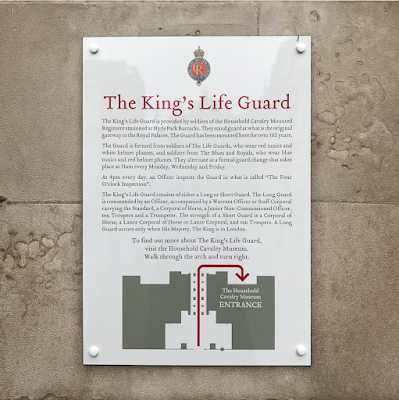
But there's so much more to see here than good looking young soldiers and beautiful beasts – continue into the passageway and look up to see a parish boundary marker painted on the stone ceiling:
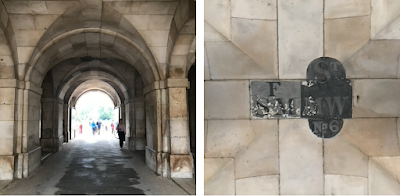
This delineation marker at the junction of St Martin-in-the-Fields and St Margaret's, Westminster, is rarely noticed by the thousands of tourists, and indeed Londoners, who daily walk through here. But there's something else to check out next time you are using this cut through – scratched into the stone walls here there are marks said to be made by the guards, possibly as they wait to move forward to the parade ground:
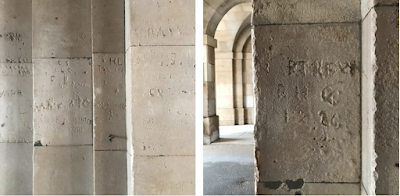
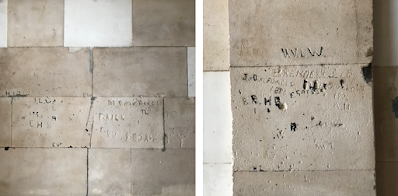
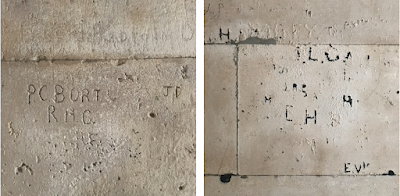
There are full names, initials and dates of varying sizes and quality. The middle right pic above shows a couple of dates; 1886 and 1924. Bottom left shows P.C. Burt, R.H.C. (Royal Household Cavalry).
Some areas are slathered in multi-layered scratchings and others are very well incised, such as the marks left by Parking and Paynter:

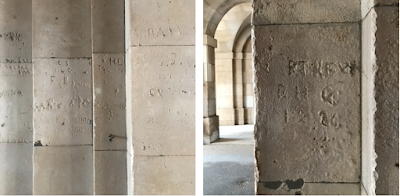
High up at the top of one of the arches on the right-hand side (as you enter from Whitehall) there is a name that looks like W. A. Burrows, beautifully executed in italic script (pics 2, 3 and 4 below):
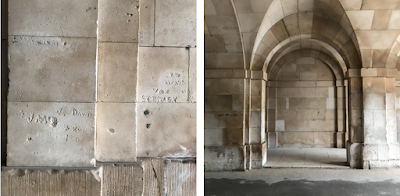
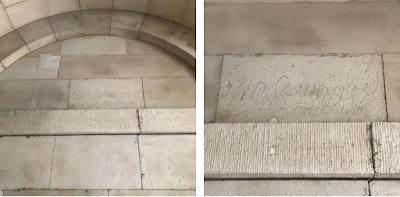
I'm wondering if he had to stand on his horse to achieve that mark. Also, how long did it take to create? Another question is, what implements did they use to make the marks? Hand held tools look to have been the favorite in the most part and some marks have been infilled with a black substance which I'm guessing is boot polish.
Some marks at lower level are dotty, messier and less distinct. I think these might have been made by the guards bashing their boots/spurs into the walls. A good example is shown below, left:
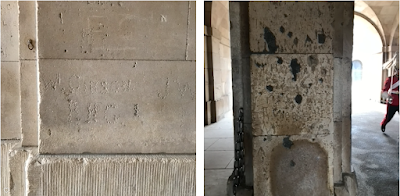
As I stared at the walls, trying to decipher names and dates, it occurred to me that many of the marks might actually be quite recent and not created by the guards at all. Almost as that thought popped into my head, two eastern European fellas walked in from the parade side and made a bee-line for the dotty heart containing the letters W.A.P. over W.L. (below left above T.S.). One fella pointed it out to the other in a sort of 'see, look there!' fashion, and the second fella seemed to say 'oh yeah' and then they walked off at speed back the way they came. Perhaps he knows who made that mark and what it means, or he could have done it himself. It looks to me to be created by a metal punch of some kind.
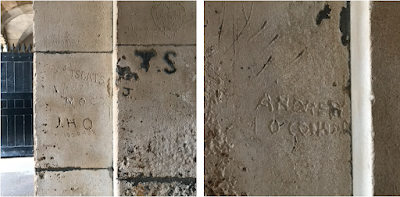
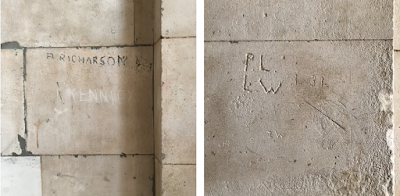
Also within that same top left pic: J.H.Q. is followed by 1925-26, although I am befuddled by TSCATS. In the other pics, Andrew O'Connor and A. Richardson haven't dated their work but there appears to be a hint of '54 under Kennedy's weak scratchings, and I think 1.31 after PL/LW in the last pic could be January 1931.
Do go and look for yourself. I wonder which of these marks is the oldest and the the newest.
